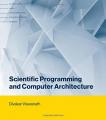Introduction to Reverse Engineering Software
by Mike Perry, Nasko Oskov
Publisher: UIUC 2004
Number of pages: 211
Description:
This book is an attempt to provide an introduction to reverse engineering software under both Linux and Microsoft Windows. The goal of this book is not to cover how to reproduce an entire program from a binary, but instead how to use the Scientific Method to deduce specific behavior and to target, analyze, extract and modify specific operations of a program, usually for interoperability purposes.
Download or read it online for free here:
Read online
(online html)
Similar books
 The New Software Engineering
The New Software Engineeringby Sue Conger - Global Text Project
The book discusses software engineer's project related knowledge and theoretical background. It covers project planning, project life cycles, methodologies, technologies, techniques, tools, languages, testing, databases, and CASE.
(19932 views)
 Specifying Systems
Specifying Systemsby Leslie Lamport - Addison-Wesley Professional
This book shows how to write unambiguous specifications of complex computer systems. It provides a complete reference manual for the TLA+, the language developed by the author for writing simple and elegant specifications of algorithms and protocols.
(15930 views)
 Scientific Programming and Computer Architecture
Scientific Programming and Computer Architectureby Divakar Viswanath - The MIT Press
This book examines and explains a variety of scientific programming models with an emphasis on how programming constructs map to different parts of the computer's architecture. Two themes emerge: program speed and program modularity.
(6641 views)
 Function Points Analysis Training Course
Function Points Analysis Training Courseby David Longstreet - SoftwareMetrics.Com
The book introduces the basic concepts of function point analysis and unit cost estimating, describes and defines the concepts necessary to establish a boundary between applications, identifies and rates external inputs and external outputs, etc.
(15398 views)